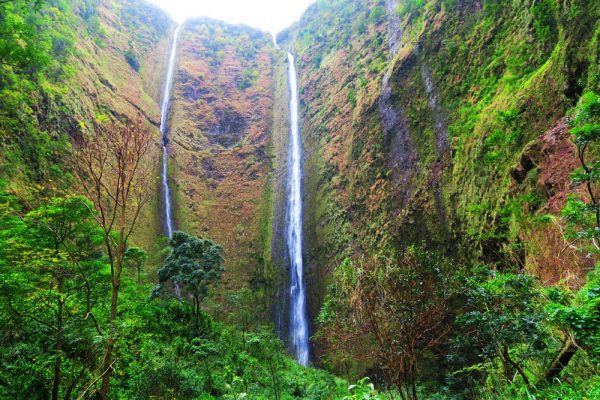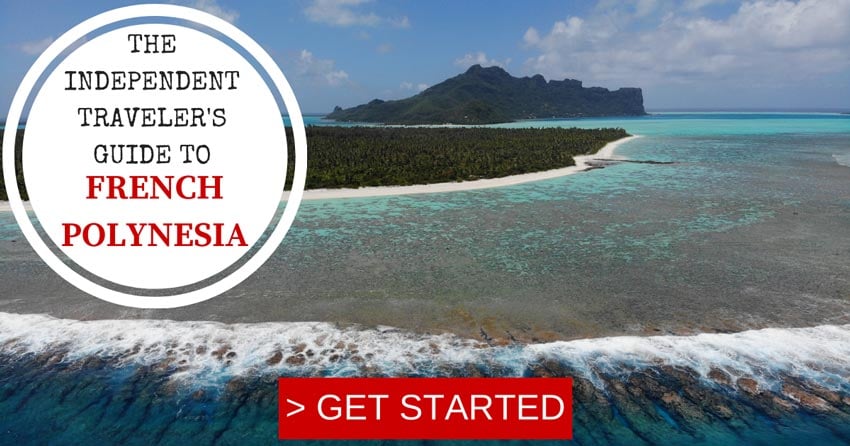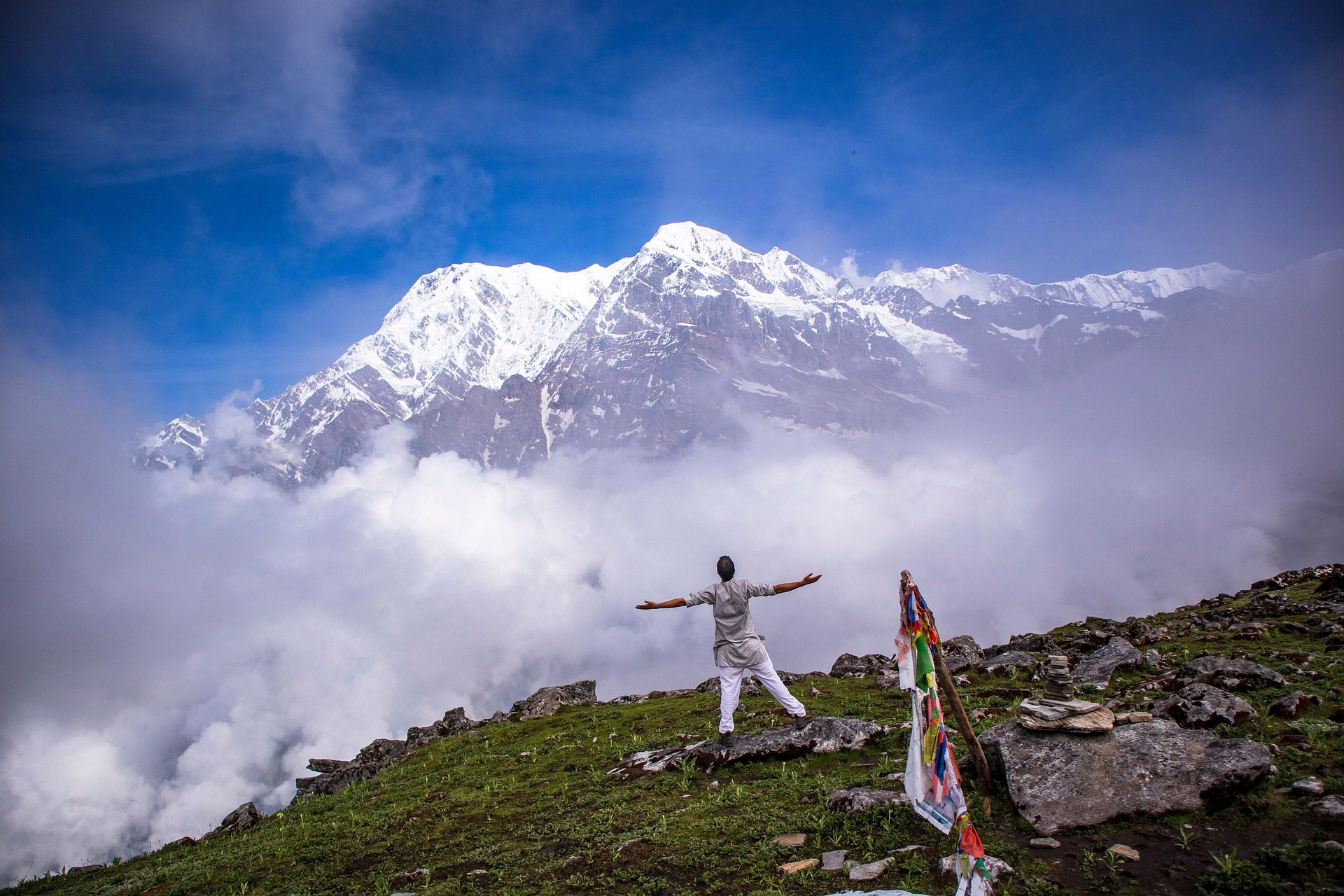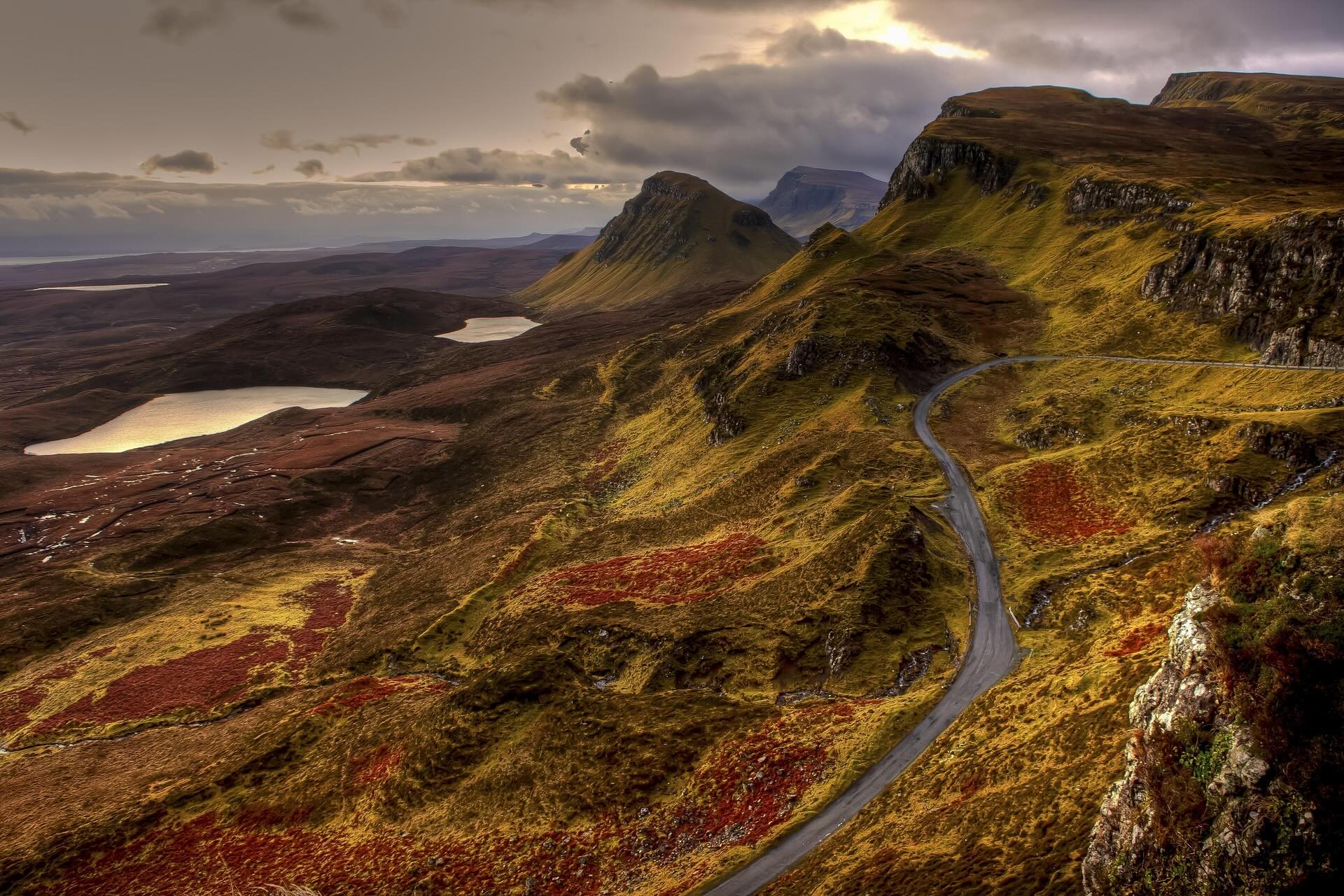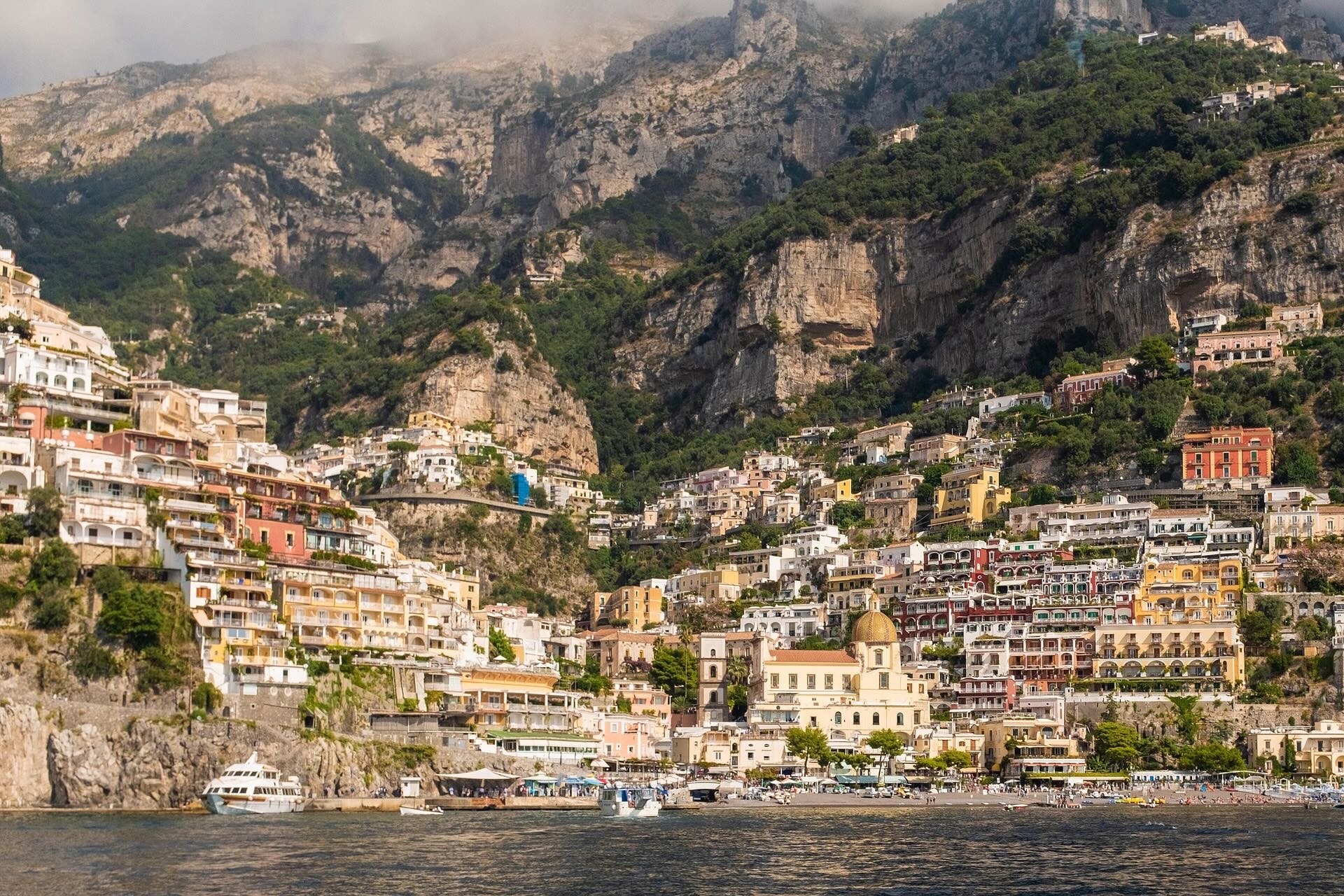Close Encounters With Dolphins In The Rangiroa Atoll
Diving in Rangiroa
On Sunday, I began two days of diving with the folks at The Six Passengers. It was interesting to meet the other divers, I call some of these guys ‘dive freaks’. Some had logged well over 1,000 dives, and pretty much everyone had their own fancy gear from back home including what seems to be the quintessential piece of diving gear – the dive computer.
There was even the lovable Yoshi, who traveled all the way from Japan to French Polynesia just to dive every day for the next two weeks in Rangiroa. This shows the reputation that Rangiroa has as a global diving Mecca. Like every good Japanese, Yoshi was accompanied by his massive underwater camera, whose footage will be turned into yet another dive video to the sounds of Enya. “Sail away, sail away, sail away with me…”

The thing to do in Rangiroa is what’s known as ‘shooting the pass’. When the currents are right, you begin your dive outside the lagoon, finally drifting back inside the narrow and deep pass together with the big fish. But before we’ll ‘shoot the pass’, let’s start off with an easy dive along the outer reef.
We headed out of the Tiputa Pass in a small zodiac into the open ocean. The plan for this dive would be to reach an area known simply as ‘the angle’. The angle is where lots of fish like to gather and there’s always a good chance of ‘surprises’ – as the instructors like to say.

The hard coral was impressive at times, but it was the sheer number of fish that was mind-blowing. There were massive schools of snappers that were bunched up together, with the entire school moving in perfect harmony to the beat of the current. Around here, staying together increases the chances of not being eaten by the sharks – who could be seen lurking in the depths below, just out of camera range.


There were also the barracudas, staying close together like the snapper, but in a formation that suggested they knew exactly where they wanted to go. In between, there were beautiful spotted fish and nothing but the deep blue. And then… it happened.
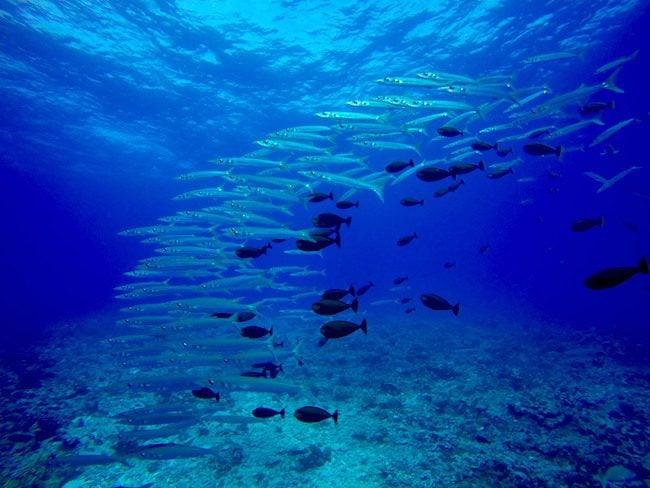

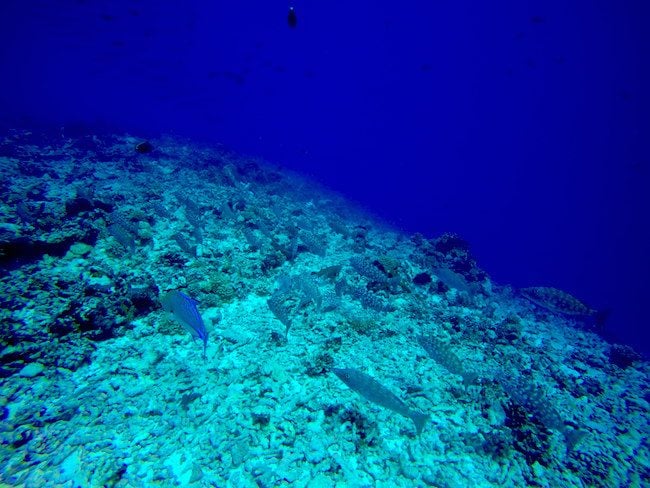
Raphael, our instructor, spotted a dolphin out in the blue where the reef ends and the ocean begins. Though you can’t speak to each other underwater, you could sense the excitement among all divers as they too spotted the dolphin and began to swim out in its direction. We managed to get really close, watching it spin around and have fun with us. This was my first time seeing a dolphin in the wild, after seeing one in captivity back in Moorea. Within seconds, there was a second one, and a third – a family of dolphins!
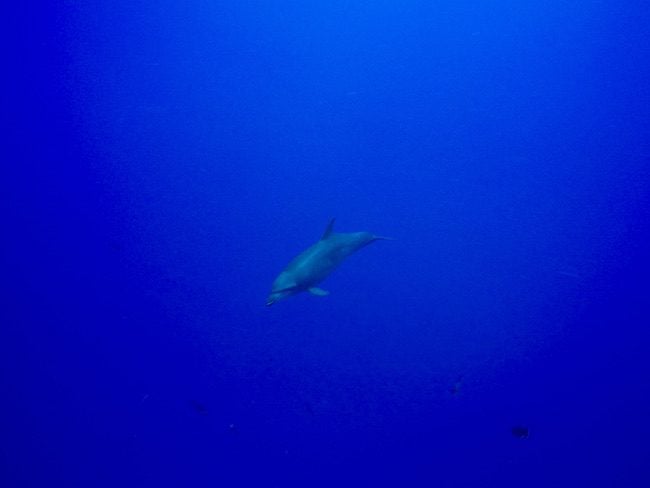
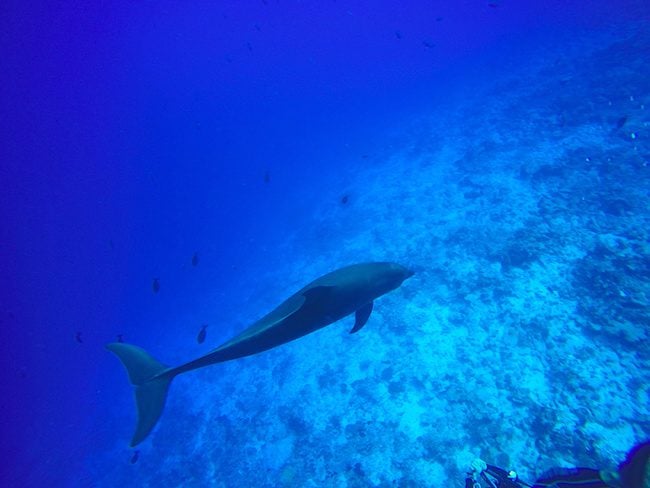
I gotta tell you, this marine mammal is something special. So graceful as it swims around, much more so than the sharks. The way it moves its body and that pointy mouth. I can’t tell you how excited Yoshi was. He must have burned a lot of oxygen rushing out to the deep blue as the dolphins were heading back. There’s some great footage of our dolphin encounter in the video that’s coming up soon.
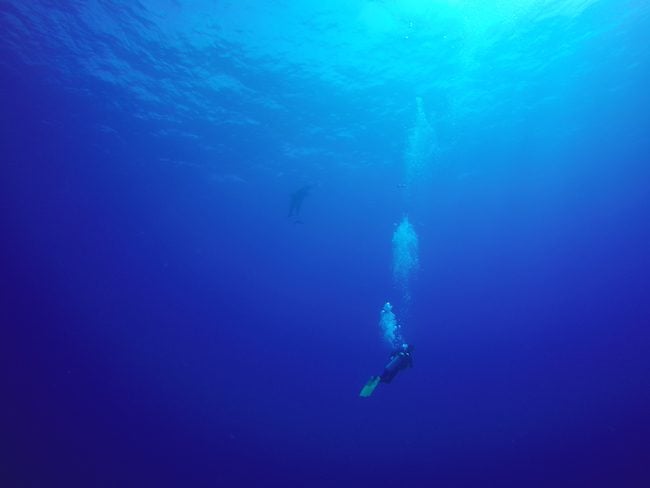
Shooting the pass
After the incredible beginner’s luck of the first dive, our next two were a lot more challenging. We once again ventured out to ‘the angle’ but this time would attempt to re-enter the lagoon, a.k.a ‘shoot the pass’.
The reef was busy with spotted groupers, our friends the snapper and barracuda. I also met my nemesis down here, the one who kept charging at me when snorkeling – remember? He didn’t dare bother me this time – not with all the heavy diving gear I was now wearing.
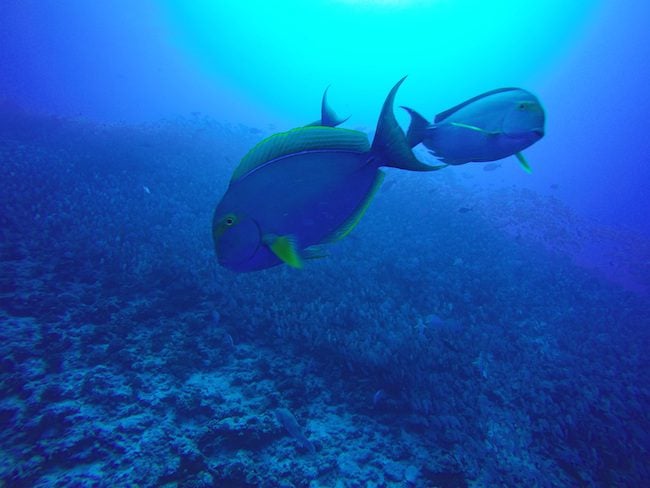
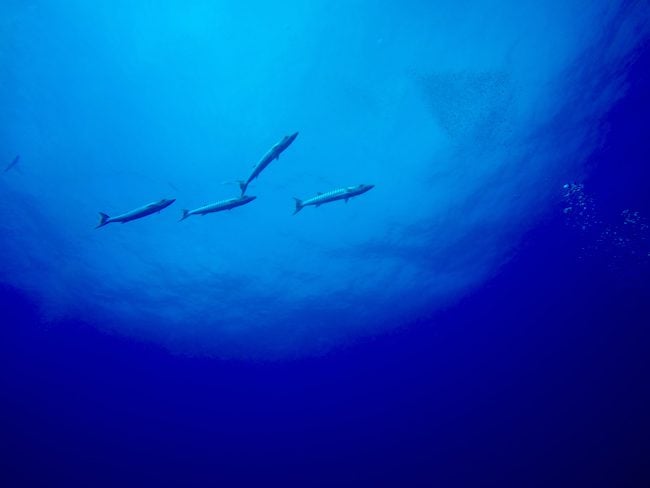
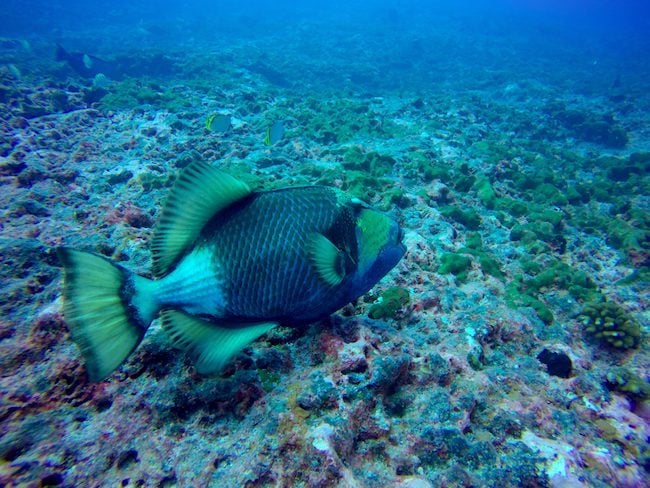
About halfway through the dive, we spotted a sea turtle munching on some hard coral. This guy wasn’t shy at all, posing for the camera and trying to bite it. Even in a prime dive site like Rangiroa, spotting threatened sea turtles is not something common.
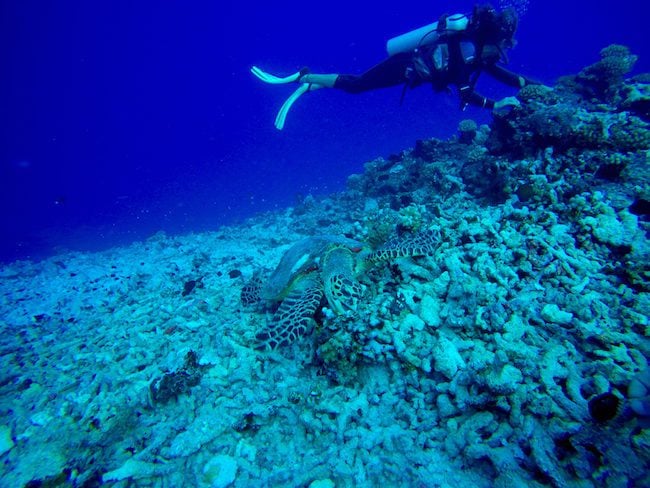
Shooting the pass was fun and challenging at the same time. Though the current is pulling you into the lagoon, there is still water being drained out. We road the current as it was coming in, and grabbed onto any hard coral we could find when being sucked back out. You just gotta watch out for the yellow coral – that’s poisonous.
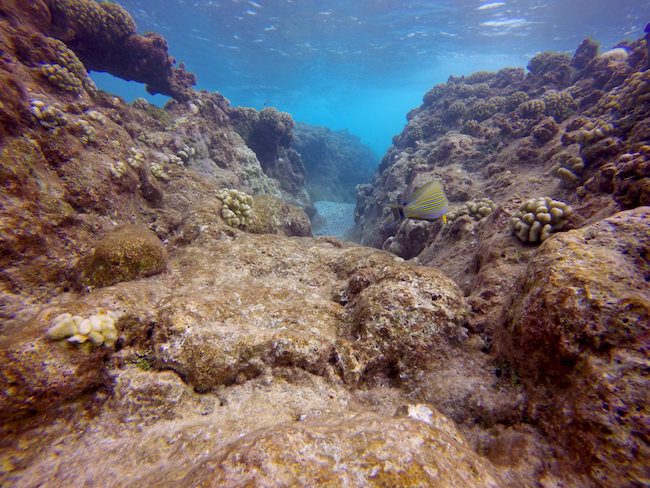
It looks & moves like a predator
On the second day of diving, we got the chance to dive the Avatoru Pass, right by the village we visited on a bicycle the other day. If conditions are right, the Avatoru Pass is where you might spot the prized silvertip shark. Apparently, they like to find their breakfast in this particular spot. I hope we’re not on the menu…

Right off the descent – there it was! As you can see, the silvertip shark is in a different league than what we’ve seen so far. It looks and moves like a predator. The shark hung around us for a while, swimming just above our heads. I think he was sizing Yoshi up for breakfast but decided to pass for a much juicier snapper.
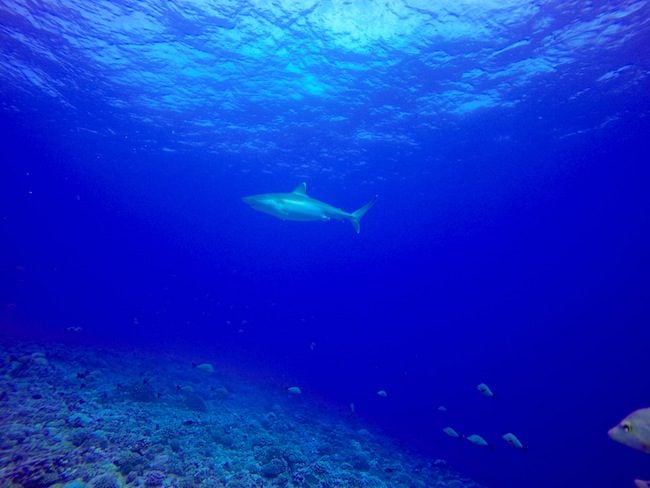
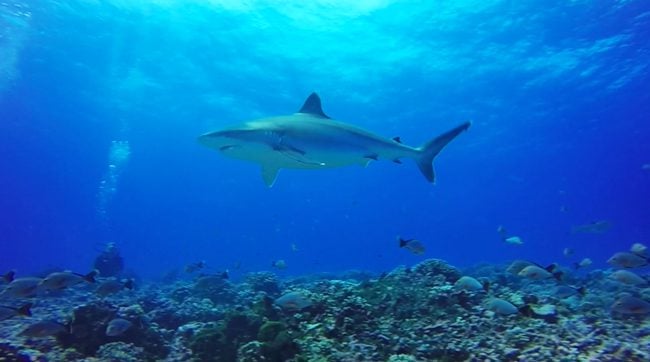
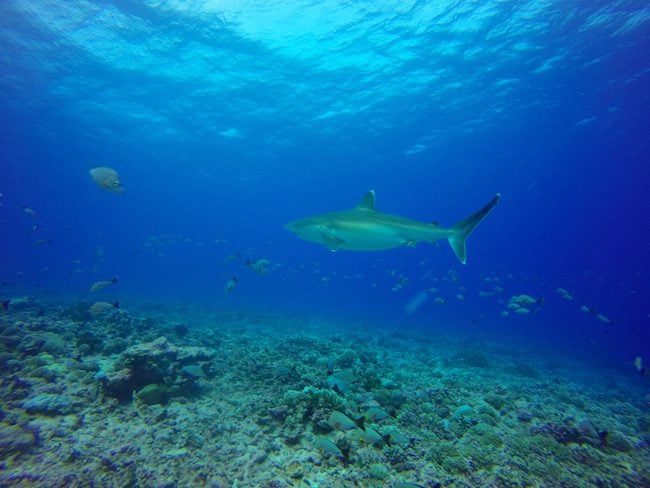
As the shark headed back into the depths of the ocean, we continued along this beautiful reef, filled with nice looking coral and colorful tiny blue fish. The current was starting to pick up by now. Frank, our instructor, suggested we hang on to the coral for a few minutes until things cooled off a bit. As the current would come, it would toss our feet over our heads and we were practically vertical for a second or two. Kind of cool!
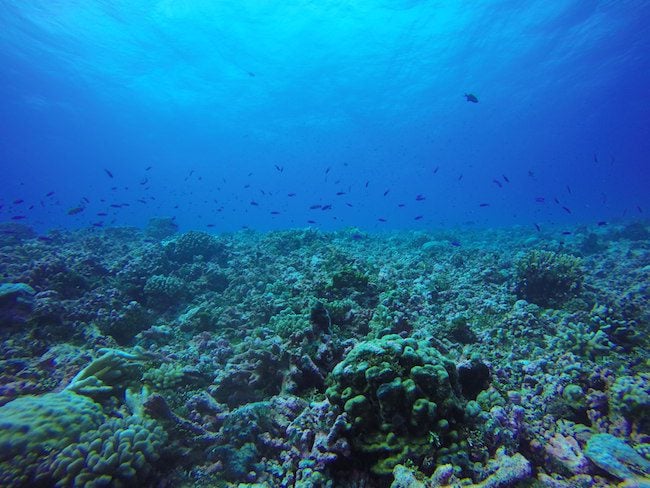

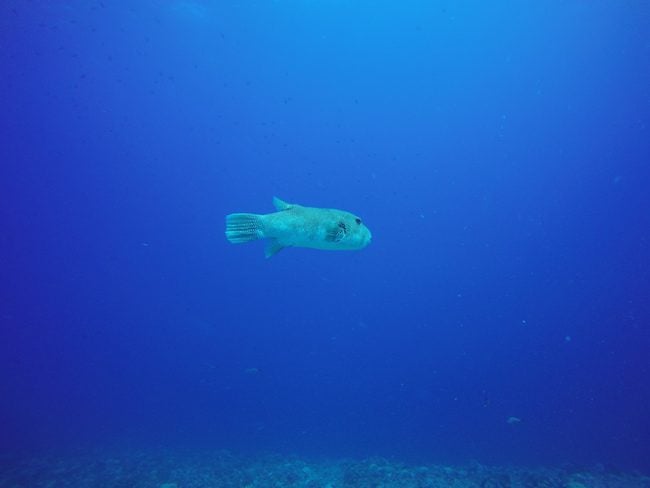
Taxi boat to Tiputa Village
After the morning dive, I had plenty of time before the sunset dive. It was a relatively busy day in Rangiroa as one of the cruise ships arrived, ushering a welcoming party of local dancers and artisans. This particular ship left England on a 4-month voyage around the world. Cool! I crossed over to the other side of the pass on a taxi boat to check out Tiputa Village.
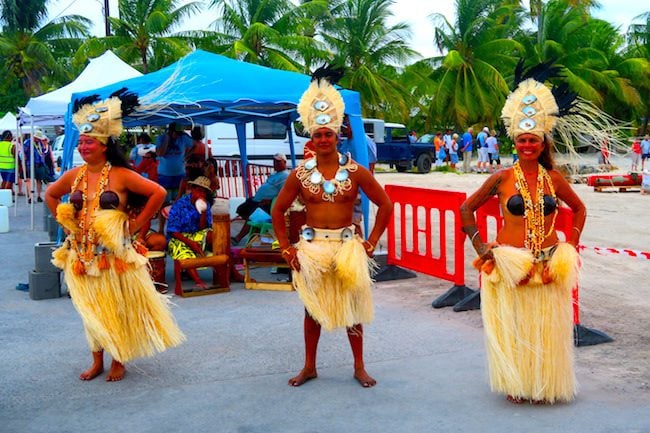
There really isn’t much happening in Tiputa Village, but that’s part of its charm. No tourist attractions, no dive shops – just locals going about their day and plenty of tiare (gardenia) on the trees. It’s a totally different scene out here: a simple life, simple homes and no sense of time.
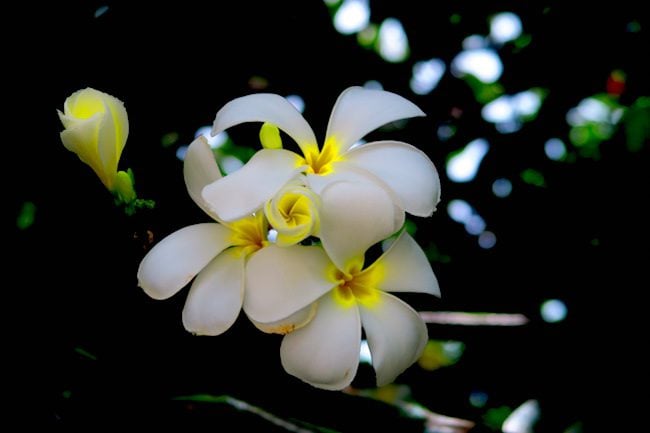
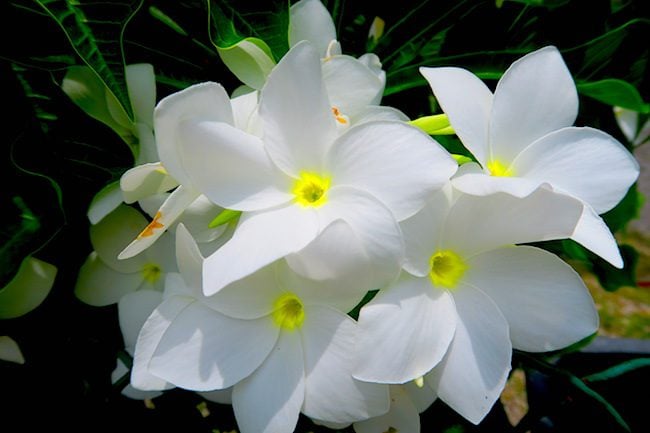


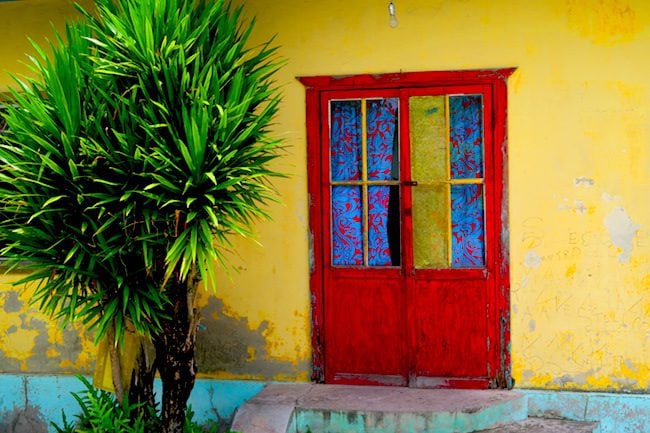
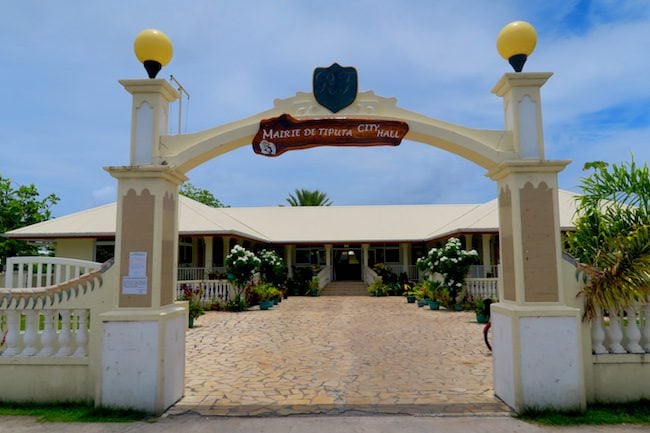

I found a couple of kids fishing off the docks and a man busy scraping the flesh out of coconuts for copra. The flesh would then be dried and shipped to Tahiti to extract its oil. As you can see, there are lots of coconuts to be scraped and it’s very hard work. Not to mention it’s 30 degrees during the day and super humid.
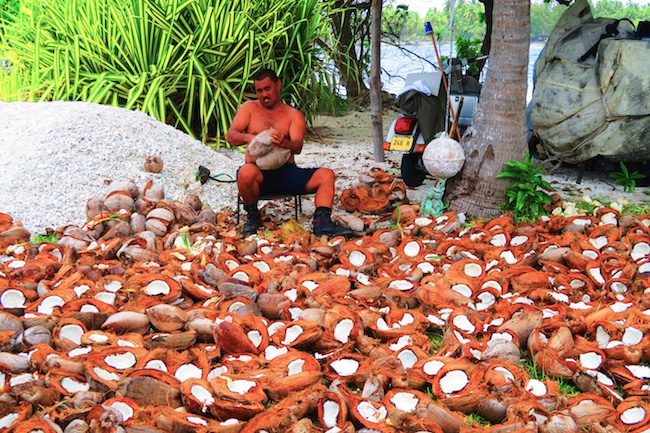

And where do all the coconuts come from? Where the village ends, begin the coconut plantations. There is pretty much a never-ending supply of coconuts, with each tree constantly producing new fruit as old ones fall. In this infertile coral rock, it’s pretty much the only thing that grows around here.

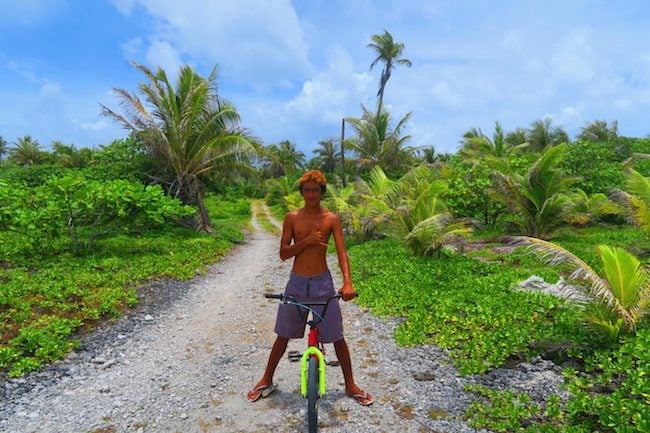
Sunset dive
Just before sunset, we headed back out of the lagoon on the tiny zodiac for my last dive in Rangiroa. It wasn’t much of a sunset on this day, but we did get a chance to escort the cruise ship, as it left the atoll en route to another island. The sun is not actually that important in a sunset dive but more the time of the day. This is when a lot is happening on the reef, with fish coming out to play, hunt and spawn.

Raphael led us in a zigzag formation, going back and forth from the deep blue to the reef. We were hoping to spot a few dolphins, but no luck this time. We did however see a school of skipjack, who looked unimpressive until examined from up close.
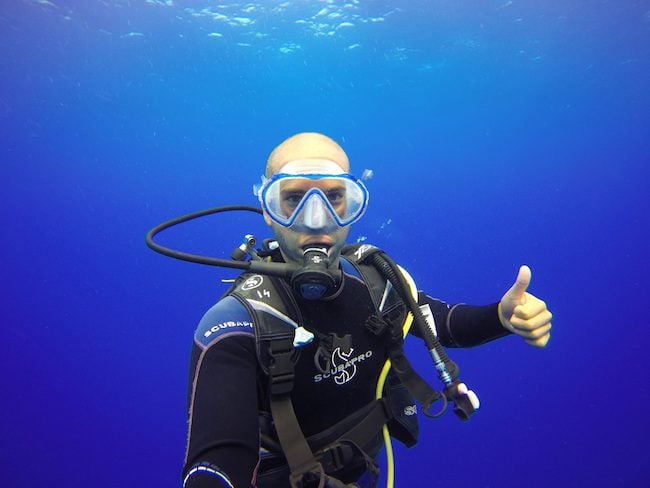
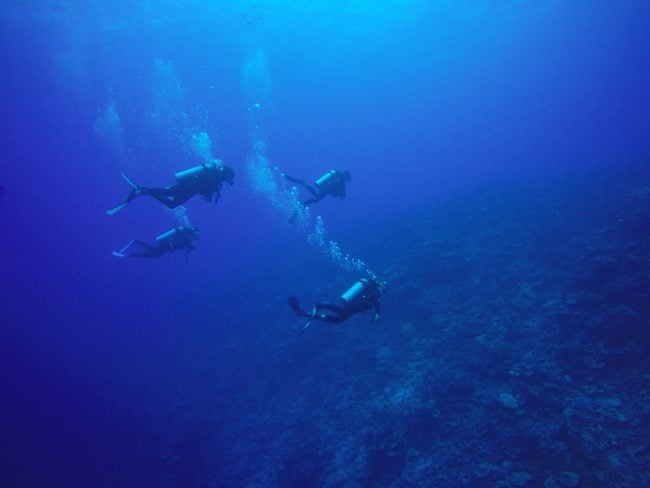
If you looked closely, you could see what looked like tiny silver bubbles rising up to the surface. These are the eggs, being laid by the female. Who knows how many of those will turn into skipjack and how many to a snack? In general, there was a lot of lovemaking among the fish during these hours. Kind of like an X-rated dive. No hammerhead shark though… Yoshi was a bit disappointing but hey – it’s not a zoo.
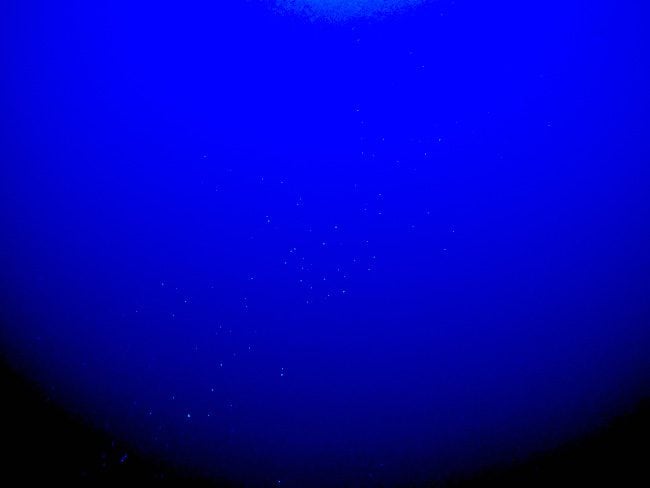
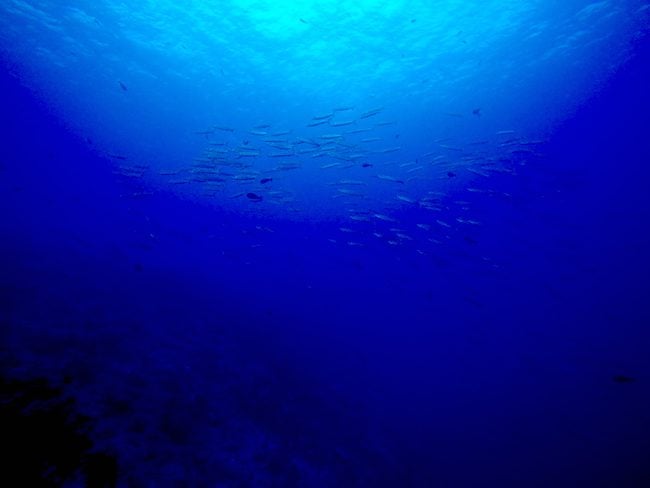
That was the fifth and last dive in Rangiroa for me. As if to tease me to come back here again, the dolphins that eluded us on the sunset dive cruised alongside our zodiac as we re-entered the lagoon. They jumped in the air in classic fashion and rode the waves so effortlessly.
Here’s a video from all the dives in Rangiroa. You’ll see the dolphins in action, the hungry turtle, loads of sharks and plenty more surprises only caught on video!
What’s next?
Rangiroa just opened my appetite for diving, so our next stop will be the Fakarava Atoll. Fakarava is to Rangiroa what Maupiti is to Bora Bora – beautiful and yet to be fully discovered. The diving is said to be simply out of this world and there’s plenty to see and do even if you’re not a diver. See you next week!
Heading off to French Polynesia? In-depth island guides to all 5 archipelagos await you, including sample itineraries and essential travel tips & tricks.
Tahiti, Tailor Made!
The Islands of Tahiti are among the last places to be colonized by mankind, 118 islands, each with its unique personality.
Get expert advice and assistance with planning your trip to the destination where tropical dreams come true!
